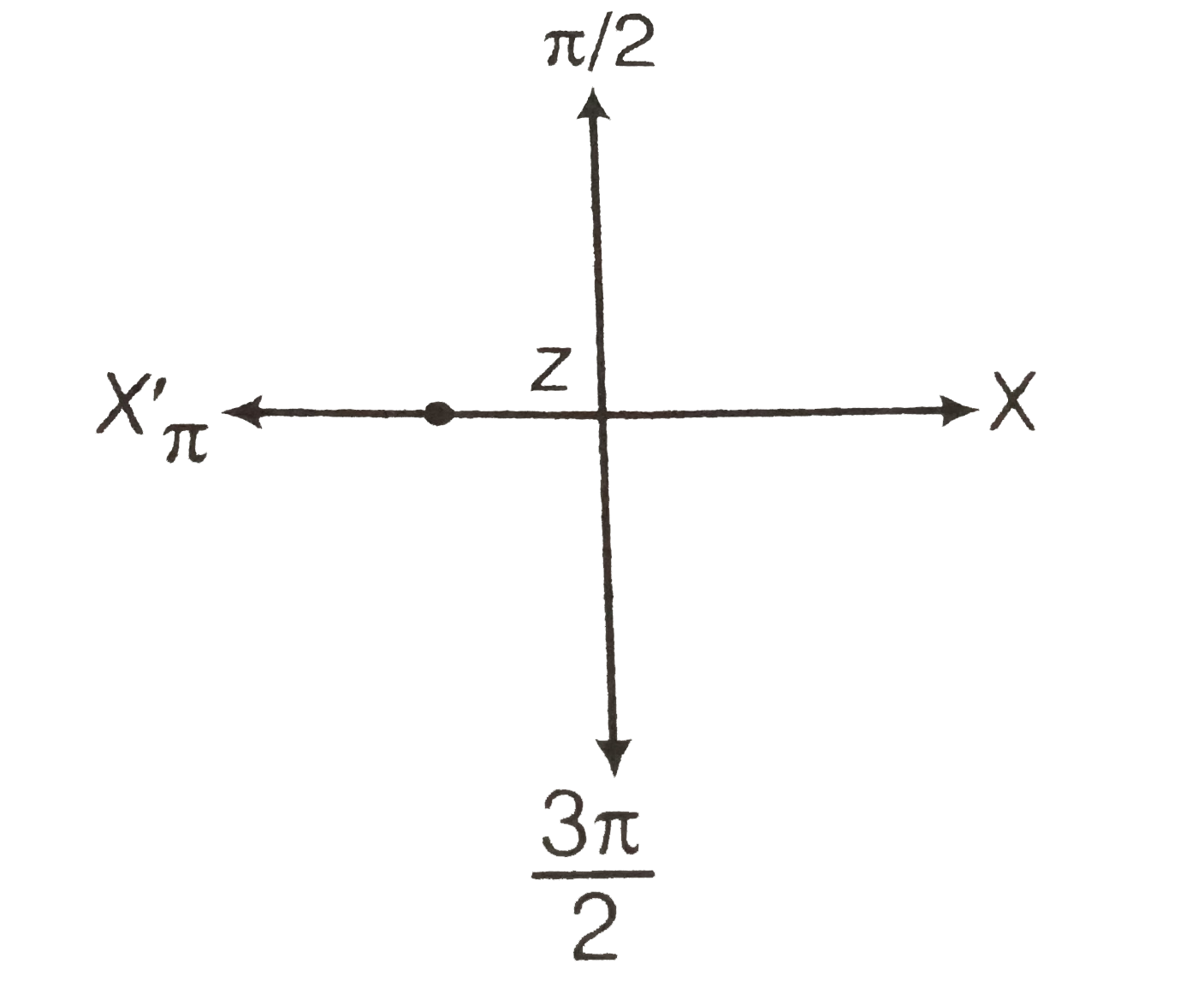the vaule of arg (x) when x<0 is (a) 0 (b) π /2 (c) π (d) none of these
0
π2
π
None of these
The correct Answer is:C
Let z=x+0iandx<0
|z|=√(−1)2+(02)=1
Since, the point (x ,0) represent z = x + 0i lies on the negative side of real axis.
∴Principal argz)=π

Topper's Solved these Questions
- BOOK - NCERT EXEMPLAR ENGLISHCHAPTER - COMPLEX NUMBERS AND QUADRATIC EQUATIONSEXERCISE - TRUE/FALSE9videos
COMPLEX NUMBERS AND QUADRATIC EQUATIONS
- BOOK - NCERT EXEMPLAR ENGLISHCHAPTER - BINOMIAL THEOREMEXERCISE - True/False7videos
BINOMIAL THEOREM
- BOOK - NCERT EXEMPLAR ENGLISHCHAPTER - CONIC SECTIONSEXERCISE - Objective type13videos
CONIC SECTIONS
Similar Questions
For the equation ∣∣x2∣∣+|x|−6=0 , the sum of the real roots is (a) 1 (b) 0 (c) 2 (d) none of these
View SolutionIf f(x)=(x+1)cotx be continuous at x=0, the f(0) is equal to (a) 0 (b) 1e (c) e (d) none of these
View SolutionThe number of real solutions of the (log)0.5(x)=|x| is (a) 1 (b) 2 (c) 0 (d) none of these
View Solutioniff(x)=⎧⎪⎨⎪⎩x+2ifx<0−x2−2if0≤x<1xifx≥1
then the number of points of discontinuity of |f(x)|is (a) 1 (b) 2 (c) 3 (d) none of theseView SolutionThe number of real solutions of the (log)0.5|x|=2|x| is (a) 1 (b) 2 (c) 0 (d) none of these
View SolutionIf the roots of x2−bx+c=0 are two consecutive integers, then b2−4c is (a)0 (b) 1 (c) 2 (d) none of these
View SolutionThe number of solution of equation |x−1|=ex is (A) 0 (B) 1 (C) 2 (D) none of these
View SolutionLet f(x)=a+b|x|+c|x|4 , where a, b, and c are real constants. Then, f(x) is differentiable at x=0 , if
View SolutionLet f(x)=a+b|x|+c|x|4 , where a,bandc are real constants. Then, f(x) is differentiable at x=0, if a=0 (b) b=0 (c) c=0 (d) none of these
View SolutionThe number of solution of equation |x−1|=ex is
(A) 0
(B) 1
(C) 2
(D) none of theseView Solution

